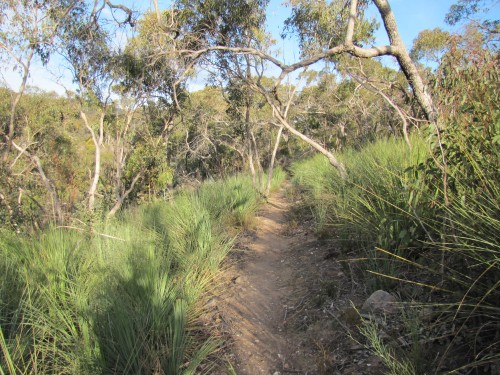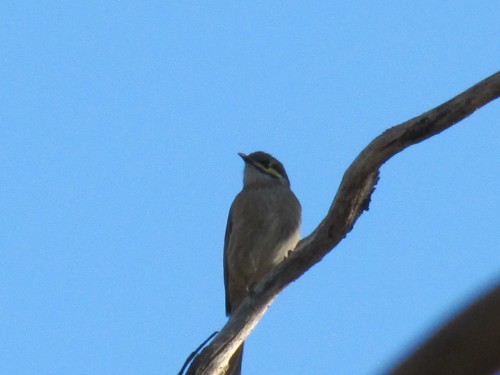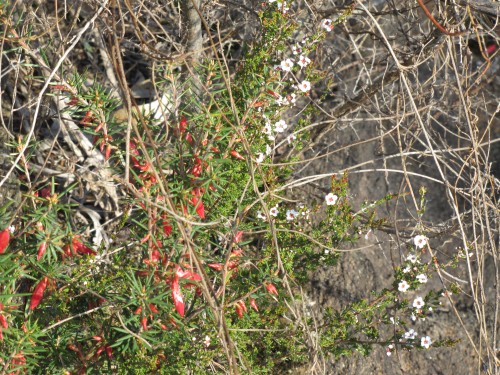Birding in Hale Conservation Park, Williamstown
Last Saturday I had a meeting in Gawler which is just over an hour’s drive from home. I had a little time on my way home, so I stopped for a hour at Hale Conservation Park near Williamstown in the Mt Lofty Ranges. We often drive past this park going to or from our daughter’s home in Clare, but we’ve only ever stopped a couple of times. This time I had a hour of birding on a lovely sunny winter’s afternoon.
The birding was a little slow with only a handful of species obvious, mostly calling. A few days ago I showed a photo of a Scarlet Robin (click here) that obligingly posed near me. I saw quite a few Yellow-faced Honeyeaters flitting around in the tree tops, but none settled close enough for a decent photo. The best of a poor set of photos is shown below. This is the best photo I have of this species, which probably means that I need to get out birding more often seeing it is quite a common species.
The final photo on today’s post is a close-up of some of the wildflowers growing in the park. I must visit again in the springtime when plenty of native plants will be in flower.
Some fellow writers and a Scarlet Robin
Today I attended the meeting of a writers’ group to which I belong. It was held in the home of a fellow writer who lives in Gawler, about an hour north of Adelaide and just over an hour’s drive from my home. It was an inspiring time hearing about the projects of my colleagues and the discussion lasted several hours – until the lunch food beckoned. The talk still continued over the meal.
On my way home I decided to do an hour of birding in Hale Conservation Park, just a few kilometres from Williamstown in the Adelaide Hills. It had been a few years since I’d walked through parts of the park. Despite the welcome sunshine, birdlife was a little slow. A few birds were calling but I didn’t see much. Eventually, just as I was about to turn back towards the car park, I saw a group of honeyeaters feeding in several trees near the path. They were Eastern Spinebills, New Holland Honeyeaters and Yellow-faced Honeyeaters. Most didn’t sit still long enough to focus my camera on them, though I did manage a few shots of the Yellow-faced.
As I was following them around, a male Scarlet Robin came and perched on a branch less than two metres from me. I had about three seconds to zoom, focus and press the shutter. The bird was gone just as quickly as it had come; I didn’t see it again. I’m so thankful that I managed to get it more or less in focus.
Sometimes you just get lucky!
Good birding.
Further Reading:
A cold, almost non-birding experience
On the last leg of our recent holiday to Yorke Peninsula we stopped briefly at the Hale Conservation Park between Williamstown and Mt Pleasant in the Adelaide Hills. It was late afternoon, cloudy, occasional showers and bitterly cold. We stopped for a quick snack and a cup of tea – to warm us up.
As we pulled up and emerged from the car, the surrounding bushland was quiet – too quiet. I not only couldn’t see any birds, there seemed to be a total silence from the resident bird life. I’ve only ever experienced this on one of two occasions before. I’ve found that almost anywhere one stops on rural roads in Australia, there will be at least some birds to be seen and/or heard. One one memorable occasion some years ago when I was gathering data for the Atlas of Australian Birds I had to submit a blank sheet; no birds in a 20 minute period. Mind you, it rained heavily during the period concerned so I was pushing the limits.
After a few frustrating – and cold – minutes waiting for something to call or appear, a small group of White-throated Treecreepers came into the car park and starting searching the bark on surrounding trees in their normal behaviour. Treecreepers and Sittellas always fascinate me with their ability to hop up and down and even underneath the trunks and branches of trees. Why don’t they sometimes fall off??
I had my camera ready, but the poor light conditions so late on a cloudy day meant I was pushing the limits trying to get photos. I would like to have used the flash, but they were too far away for that. The photos are not brilliant; they are the best I could achieve in the conditions.






